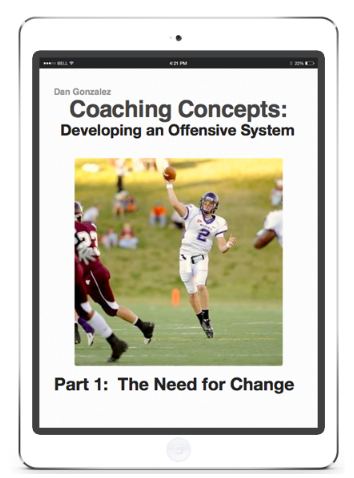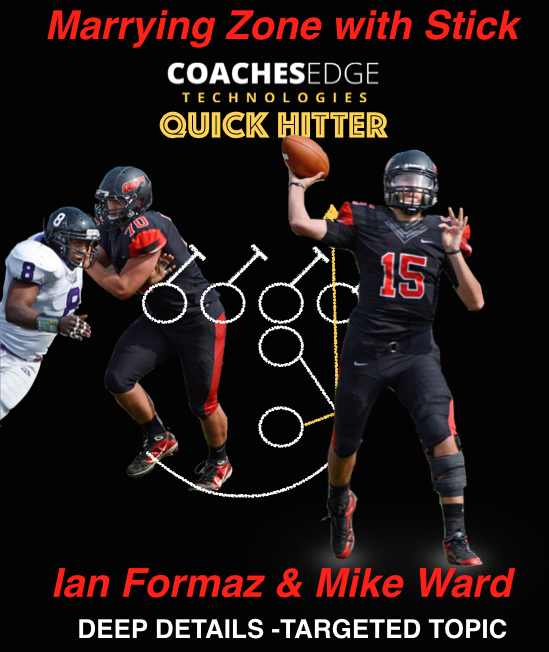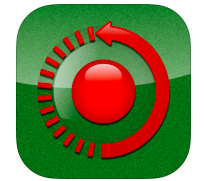Quick Hitters: Information on one specific topic. $5.99-9.99
The Quick Hitter allows a coach to find information on a very narrow topic. The coaches sharing this topic still provide great detail. The Quick Hitters will be valuable tools for a coach looking for specific ideas. This type of information is useful both the off season as well as during the season. As we build our library, we will incorporate a cutting edge search tool allowing a coach to get the exact resource he needs to solve a problem or improve a certain aspect of his own system. The Quick Hitter gives you the critical information you need right now.
The Squeeze Concept iPad more info
Marrying Stick and Zone Bubble (an RPO) iPad iPhone Google Play more info
Something to Hang Your Hat on Inside Zone iPad more info
101+ Pro Style Pistol Offense Plays: Play Action iPad iPhone More Info
101+ Pro Style Pistol Offense Plays: Pin & Pull Sweep iPad More Info
The Zone Offense-Define the System and Build the Foundation iPad more info
The Zone Offense-Develop the Fundamentals iPad more info
The Zone Offense-Structure a Starting Point and Develop Coaching Methods iPad more info
F.A.S.T. Manuals (will be sold for $4.99) download our first one free!
FOCUSED ATTACK STRATEGIES & TACTICS
At Coaches Edge Technologies, we are revolutionizing the coaching education market by producing information on a cutting edge platform. We do not want our innovation to stop there. In today’s information age, being able to find answers and ideas and then incorporate those into an existing system is of paramount importance. In order to aid coaches in finding detailed and relevant information, we continue to create a distinguished product line. We continue to produce our author series manuals. This type of product has been the standard in coaching education for many years, but our new, state-of-the-art, digitally enhanced format provides a more thorough, easy-to-understand analysis of how systems, concepts, and new ideas can be successfully incorporated. The Coaches Edge Author Series Manuals provide an unrivaled amount of content for a coach to study. At Coaches Edge we realize that coaches need a different way to find, consume and interact with information. Coaches must be able to get detailed answers that cut to the core of what makes the answers successful. Therefore, we created two product lines that enable a coach to tailor his research. The F.A.S.T. Manual and the Quick Hitterprovide a new and more relevant way for coaches to interact with coaching info. The F.A.S.T. (Focused Attack Strategies and Tactics) Manual Series goes beyond teaching the concept to presenting the application of strategies and tactics. Understanding a concept is one thing. Being able to experience a coach’s though process in using his system is another. This type of information is not only useful in off season research, it provides a coach an easily consumed piece for week to week research and review of tactics that his team may need to use during the season. For example, if it’s a certain formation against a certain defense, or a specific blitz scheme against a pass protection, our library can provide the answers. The Quick Hitter Series provides the coach with ideas on a single focused topic. This might be a certain route, run concept, defensive pressure, special teams scheme, or in-game procedure or tempo. Though the amount of content presented is equivalent to a chapter from an author series manual, the depth and detail remain. Coaches Edge is committed to utilizing innovative ways to provide coaches the interaction they need to assimilate ideas into their coaching. F.A.S.T. Manual: 15 Personnel Power Package “15” meaning 5 TE (and h-back type), 1 running back (the wildcat) are utilized to create an effective short yardage and goal line package as well as a nice open field change-up. The coaches thought process in analyzing strengths and weaknesses, planning for adjustments and creating opportunities is shared in text and video. Application of the plan is illustrated with multi-angle game footage and voice over analysis and telestration. All raw cut-ups are included for the readers own review and study.
get it here for the iPad/Mac
get it here for iPhone
get it on Google Play (Window, Android and iPhone)
Author Series
The Author Series presents volumes of work by our coaches. This is where you will get very detailed information designed to allow you to master the material and utilize it within your own system. Our coaches back hours of video, hundreds of diagrams, interactive presentations, diagrams, and of course text into each manual. If there is an idea you want to implement, these manuals give you what you need
Explosive Offense: Manufacturing Vertical Shots iPad More Info

Quick Rhythm Option Routes iPad More Info

101+ Read Game Plays iPad More Info

Targeted Attack: Using Tempo As a Weapon iPad More Info
RPO (Run Pass Option) iPad More Info
The Blue Print iPad Google Play More Info
The Need for Change iPad IPhone Google Play More Info
Core Drills For Developing Football Kicking Skill iPad More Info
The Zone Offense: Create a Structured System iPad More Info
101+ Pro Style Pistol Offense Plays iPad More Info
Pass Protection from No TE Formations iPad





















